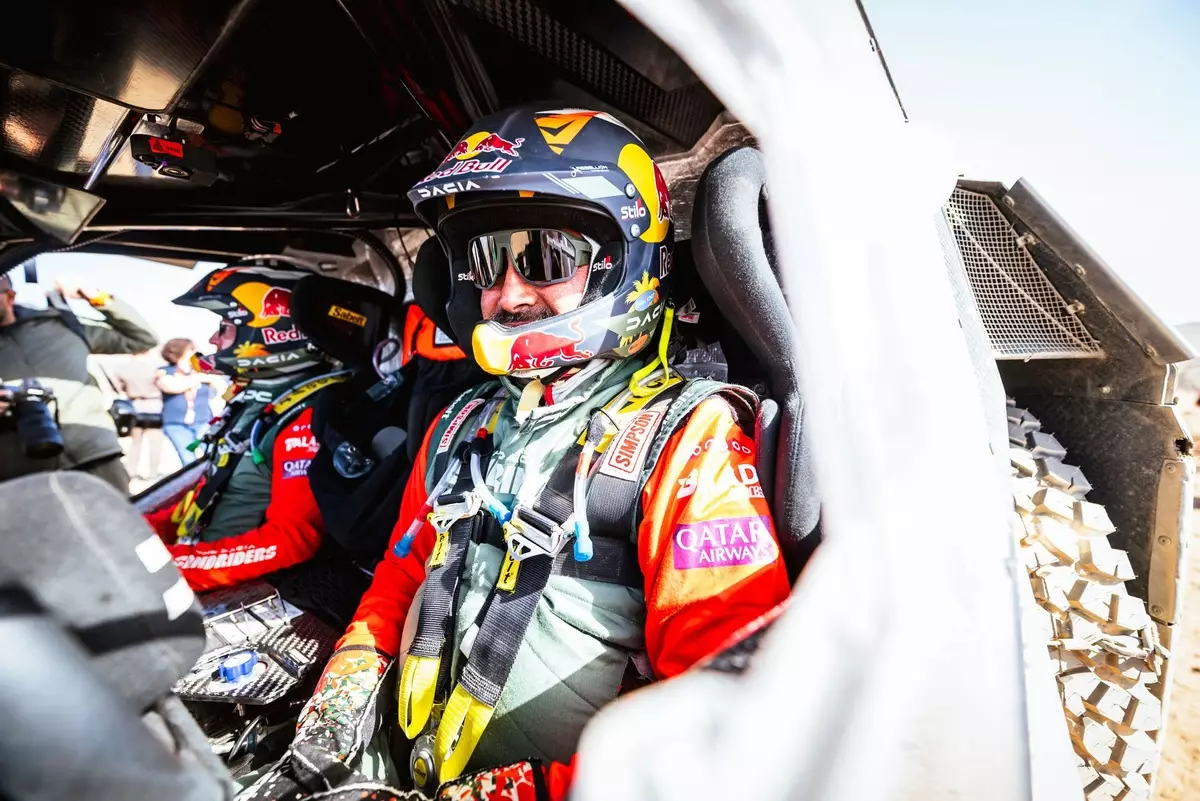The Dakar Rally, known for its harsh terrains and demanding challenges, often presents a stage for not just the skills of the participants but also for the intricacies of its regulations and governance. The recent events from the 2025 edition have spotlighted the intense scrutiny around the decision-making processes of the FIA (Fédération Internationale de l’Automobile), particularly in response to safety concerns that have seen prominent figures like Carlos Sainz Sr. sidelined from the race. Dacia driver Nasser Al-Attiyah’s reactions highlight the complexity of competitive sports and the tightrope that governing bodies walk between ensuring safety and allowing fair competition.
Safety Regulations Under Fire
In a controversial move, the FIA declared that Sainz and fellow competitor Sebastien Loeb would not be allowed to continue the Dakar Rally due to concerns about structural integrity following roll cage damages from their accidents. Though the FIA’s decision emphasized safety as a priority, Al-Attiyah expressed frustration, suggesting that the rules are ambiguous and perhaps too stringent. His inquiry into why Sainz was unable to continue underscores a larger theme in Moto-sport: the balance between protecting drivers and allowing them the freedom to compete. Al-Attiyah stated, “We can fix it, the team can fix it, why do you say, ‘OK, it’s over’?” This sentiment reinforces the notion that professional drivers often feel capable and prepared to take risks, further complicating the dialogue surrounding safety regulations.
Furthermore, Al-Attiyah’s argument questions the FIA’s approach to repairs during the event. As he pointedly noted, the nature of the Dakar requires adaptability and resilience; to him, the possibility of repairs should not be outright denied. This perspective pushes towards a discussion on whether the governance of motorsport is evolving in a way that enhances or undermines the spirit of competition.
The exclusion of top competitors alters not only the race outcome but the strategies of those who remain. With the exit of both Sainz and Loeb, Al-Attiyah finds himself facing diminished competition. Only a few contenders like Mattias Ekstrom and the Toyota duo Henk Lategan and Yazeed Al-Rajhi stand in his way for overall victory. The presence of such a narrow field of competitors for Al-Attiyah raises questions about the essence of racing itself. Is victory truly satisfactory when it comes as a result of other competitors’ misfortunes?
Additionally, Al-Attiyah’s ongoing frustrations only deepened with the added tension of a ten-minute penalty imposed for losing a spare wheel during Stage 5. He has openly criticized the regulation, indicating that such penalties might unintentionally rob a driver of hard-earned victories—”I will make a good letter to the [FIA] president to avoid all that.” This comment underscores his determination to ensure fairness in competition amid the uncertainties of race outcomes dictated by regulations rather than sheer driving merit.
Despite the challenges, Al-Attiyah remains resolute about his ambitions for a sixth victory at Dakar, a determination amplified by the opportunity to inch closer to Stephane Peterhansel’s record of eight wins in the car category. With only six stages left and a deficit to overcome, his confidence does not waver, stating simply, “I will win. I have no doubt.” The nuances of competition become poignant here; the mental fortitude exhibited in elite racing can often be as critical as technical skills or vehicle performance.
Yet, there lies a dichotomy wherein self-assuredness must coexist with caution, as noted by Al-Attiyah himself: “The next six days will be difficult for the three of us because when you want to win, you start to make a lot of mistakes.” His awareness of this balance is commendable, capturing the essence of high-stakes racing where even small errors can lead to significant setbacks.
The narrative of the 2025 Dakar Rally extends beyond just the physical challenges of off-road racing; it encompasses the ensuing controversies over rules and safety, the impact of such regulations on competitive integrity, and the mental resilience necessary to finish strong in a contest designed to test the limits of human perseverance against nature’s formidable forces. As the stages unfold, so will the conversations—not only around the outcomes for drivers like Al-Attiyah but also about the future standards and governance within the sport.


Leave a Reply